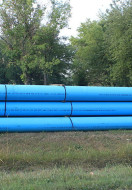Spray Polyurethane Foam (SPF) insulation is rigid, lightweight, flexible, wind resistant, and effective in extreme temperatures and weather conditions. SPF insulation has the highest R-value per square inch of any commercially available insulation material.
What is R-value?
R value insulation ratings are used to measure insulations ability to resist heat flow. The higher the R-value, the more effective it is. When you are purchasing insulation for your home do so based on its R-value.
Energy Efficiency
According to a 2002 US Department of Energy report, heating and cooling costs amount to 50-70% of the energy used in the average American home. With the costs of heating and cooling going up, this is a concern of most home and building owners. Most of us know to turn off the lights to conserve energy but don’t think to look to insulate our homes/buildings to more efficiently heat and cool them.
Builders and architects are now turning to spray polyurethane foam (SPF) to curb these problems. SPF is one of the most efficient insulation materials on the market today for roof and wall insulation, insulated windows and doors, and air barrier sealants.
Why is SPF Energy Efficient?
- Polyurethane foams have one of the highest insulating R-values per inch of all the available products on the market today. With typical values ranging from 3.5 to 6.0 per inch, it is possible to maximize efficiency, increase space utilization and reduce operating costs, while having thinner walls and a lower profile roofs.
- Studies show that increasing the thickness of your roof insulation by 1” or move about the ASHRAE required thickness significantly reduces your energy costs.
- SPF sealants that are applied to cracks around window frames expand to fill energy-wasting (escaping) gaps around the window, which increases your buildings energy efficiency.
- Energy studies performed by Texas A & M on their own roofs show the energy cost reductions obtained by applying SPF to more than 8 million square feet of roofing paid for the cost of the retrofit in a little over three years.
- Cool roofs (using reflective plastic coverings over SPF insulated roofs) bounce sunlight and radiant heat away from a building, helping the structure stay cool and reducing energy use for cooling.
Source: The Spray Polyurethane Foam Alliance (SPFA)







